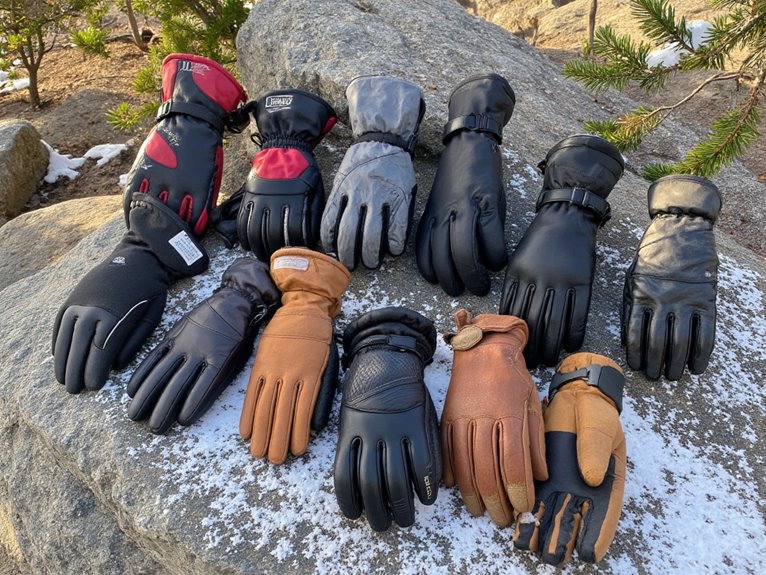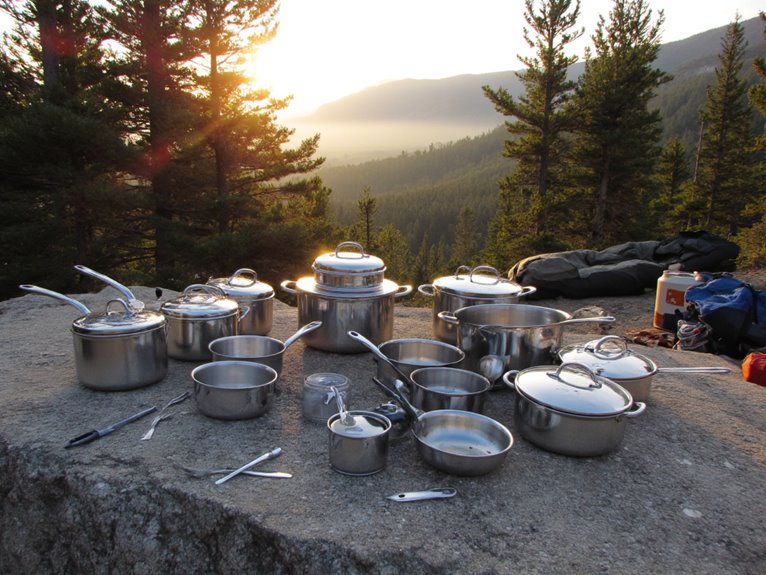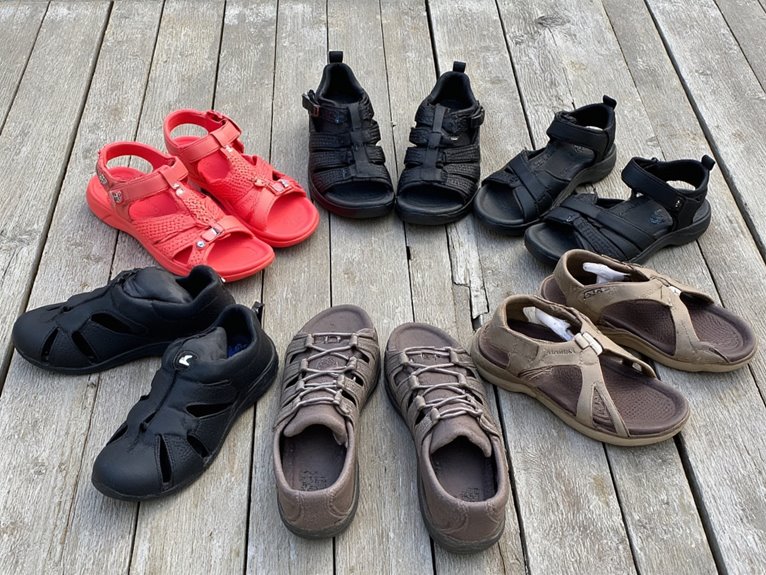How Many Litres Is a Medium Alice Pack?
A medium Alice pack has a capacity of approximately 73 liters, making it an ideal choice for short to medium-duration trips or expeditions where a moderate amount of gear is required. This size pack is suitable for carrying a moderate amount of equipment, allowing for efficient packing and organization. With a capacity of 73 liters, you can plan and pack effectively, knowing exactly how much gear your pack can hold. As you delve into the world of Alice packs, you'll discover more insights into their design, features, and capabilities, ultimately helping you choose the right pack for your needs.
We are supported by our audience. When you purchase through links on our site, we may earn an affiliate commission, at no extra cost for you. Learn more. Last update on 28th December 2025 / Images from Amazon Product Advertising API.
History of the Alice Pack
The All-Purpose Lightweight Individual Carrying Equipment (ALICE) pack, a staple of the US military's infantry units, has a rich history dating back to the 1970s.
Developed to replace the M1952 and M1961 packs, the ALICE pack was designed to be a more efficient and comfortable load-carrying system.
The pack's modular design allowed soldiers to customize their load-out to suit their specific needs.
Over the years, the ALICE pack has undergone several modifications, including the addition of new materials and features.
Despite being replaced by the MOLLE (Modular Lightweight Load-carrying Equipment) system in the 1990s, the ALICE pack remains an iconic symbol of US military ingenuity and continues to be used by various military and civilian organizations.
Measuring Backpack Capacity
Measuring the capacity of a backpack, such as the ALICE pack, is vital to verifying that it can hold adequate supplies for extended periods in the field.
Capacity is typically measured in litres, with larger packs holding more volume.
To accurately measure capacity, manufacturers use a standardized method that involves filling the pack with a specific number of cubic centimetres of material.
This volume is then converted to litres.
It's essential to take into account the pack's dimensions, compartments, and pockets when measuring capacity, as these features can affect the overall volume.
Precise measurement guarantees that users can plan and pack effectively, knowing exactly how much gear their pack can hold.
Understanding Litre Conversion
When working with backpack capacity, accurately converting between units of measurement is vital.
Understanding the fundamentals of volume measurement and the metric system is essential to make these conversions easily and confidently.
Converting Units Easily
Converting between units of measurement is an essential skill for anyone working with liquids, and litre conversion is no exception.
To convert between litres and other units, it's vital to understand the conversion factors. One litre is equivalent to 1,000 millilitres (mL) or 1,000 cubic centimetres (cm³).
Additionally, 1 litre is equal to 33.81 fluid ounces (fl oz) or 0.2642 gallons.
When converting, it's essential to take into account the context and unit of measurement required. For instance, when working with small volumes, millilitres or cubic centimetres might be more suitable.
Volume Measurement Basics
In the context of volume measurement, a fundamental understanding of litre conversion is essential for accurate calculations and effective communication.
Volume measurements are often expressed in different units, requiring conversions between them.
A thorough grasp of litre conversion enables seamless shifts between units, avoiding errors and misunderstandings.
The litre is a fundamental unit of volume in the International System of Units (SI), with 1 litre equal to 1,000 millilitres or 1,000 cubic centimetres.
Understanding these equivalencies allows for effortless conversions between litres and other units, such as millilitres, cubic centimetres, and cubic metres.
This foundation in volume measurement basics is vital for precise calculations and effective communication in various fields, including science, engineering, and everyday applications.
Metric System Essentials
A solid grasp of the metric system is essential for accurate litre conversions, as it provides a standardised framework for expressing volumes in a logical and consistent manner.
The metric system is based on multiples of 10, making conversions between units straightforward.
In the context of litre conversions, understanding the relationships between units such as millilitres (mL), litres (L), and kilolitres (kL) is essential.
Familiarity with metric system prefixes, such as milli- (10^-3), centi- (10^-2), and kilo– (10^3), is also indispensable.
By mastering these fundamental concepts, individuals can confidently perform litre conversions with ease, ensuring accuracy and precision in their calculations.
A strong foundation in the metric system is essential for tackling complex conversions and ensuring reliable results.
Medium Alice Pack Dimensions
The Medium Alice Pack, a standard issue backpack used by the US military, has external dimensions of 20 inches in height, 13.5 inches in width, and 10 inches in depth.
These dimensions provide a solid foundation for understanding the pack's capacity.
The pack's rectangular shape allows for efficient packing and organization of gear.
The dimensions also influence the pack's volume, which is essential for determining its capacity in litres.
Understanding the external dimensions is vital for effectively utilizing the pack's space and packing gear efficiently.
Comparing Alice Pack Sizes
While the Medium Alice Pack is a popular choice among military personnel and outdoor enthusiasts, its smaller and larger counterparts offer distinct advantages for specific users and applications.
The Small Alice Pack, with a capacity of around 40-50 liters, is ideal for short-duration missions or minimalist backpackers.
In contrast, the Large Alice Pack, with its 90-100 liter capacity, is better suited for extended expeditions or users who require additional storage.
When selecting an Alice Pack, it's essential to weigh factors such as trip duration, gear requirements, and personal preference to choose the ideal size.
Real-World Packing Examples
When packing for a trip or a hike, it's essential to optimize the space in a medium Alice pack.
In the following examples, we'll examine how to efficiently allocate the available litres to accommodate essential gear and supplies.
Packing for a Trip
Packing a medium Alice pack for a trip requires strategic planning to maximize the available 30-40 liter capacity. To make the most of the space, it's essential to prioritize essentials and pack smart.
Three essentials to prioritize packing:
Clothing: Pack versatile, quick-drying clothing that can be layered for different weather conditions.
Toiletries: Include a travel-sized toiletry bag with essentials like toothbrush, toothpaste, and any personal hygiene items.
Electronics: Bring a portable charger, phone, and any other necessary devices, along with their respective cables and adapters.
Packing for a Hike
For a hiking trip, the same principles of strategic packing apply, but the focus shifts to prioritizing gear and supplies that guarantee safety and comfort on the trail.
Essential items include a first-aid kit, navigation tools, and emergency shelter.
Clothing and footwear should be durable, waterproof, and suitable for varying weather conditions.
A water filtration system or water purification tablets are also vital for safe hydration.
Food and snacks should be lightweight, high-calorie, and easy to prepare.
Additionally, a portable stove, cooking pot, and eating utensils are necessary for meal preparation.
Choosing the Right Alice Pack
Selecting an Alice pack that meets your specific needs is essential, as it can greatly impact the success and comfort of your outdoor adventure.
A well-chosen pack can make all the difference in your hiking experience.
To guarantee you make the right choice, consider the following key factors:
Capacity: Consider the length of your trip and the gear you need to carry. A pack with adjustable compartments can help you customize the space to fit your needs.
Comfort: Look for features like padded shoulder straps, hip belts, and back panels that promote airflow and reduce fatigue.
Durability: Choose a pack made with high-quality, water-resistant materials that can withstand various weather conditions.




